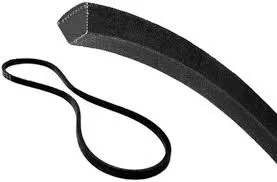- Arabic
- French
- Russian
- Spanish
- Portuguese
- Turkish
- Armenian
- English
- Albanian
- Amharic
- Azerbaijani
- Basque
- Belarusian
- Bengali
- Bosnian
- Bulgarian
- Catalan
- Cebuano
- Corsican
- Croatian
- Czech
- Danish
- Dutch
- Afrikaans
- Esperanto
- Estonian
- Finnish
- Frisian
- Galician
- Georgian
- German
- Greek
- Gujarati
- Haitian Creole
- hausa
- hawaiian
- Hebrew
- Hindi
- Miao
- Hungarian
- Icelandic
- igbo
- Indonesian
- irish
- Italian
- Japanese
- Javanese
- Kannada
- kazakh
- Khmer
- Rwandese
- Korean
- Kurdish
- Kyrgyz
- Lao
- Latin
- Latvian
- Lithuanian
- Luxembourgish
- Macedonian
- Malgashi
- Malay
- Malayalam
- Maltese
- Maori
- Marathi
- Mongolian
- Myanmar
- Nepali
- Norwegian
- Norwegian
- Occitan
- Pashto
- Persian
- Polish
- Punjabi
- Romanian
- Samoan
- Scottish Gaelic
- Serbian
- Sesotho
- Shona
- Sindhi
- Sinhala
- Slovak
- Slovenian
- Somali
- Sundanese
- Swahili
- Swedish
- Tagalog
- Tajik
- Tamil
- Tatar
- Telugu
- Thai
- Turkmen
- Ukrainian
- Urdu
- Uighur
- Uzbek
- Vietnamese
- Welsh
- Bantu
- Yiddish
- Yoruba
- Zulu
Jul . 27, 2024 17:59 Back to list
Guide to Replacing the Timing Belt on Your Tiggo SUV for Optimal Performance
Understanding the Importance of the Tiggo Timing Belt
The timing belt is a crucial component in the engine of the Chery Tiggo, a popular SUV that has garnered attention for its reliability and performance. The timing belt’s primary function is to maintain the synchronization between the engine's crankshaft and camshaft. This synchronization is vital for the proper timing of the engine's valves and pistons, ensuring that the engine operates efficiently and prevents catastrophic failures.
What is a Timing Belt?
A timing belt is a rubber belt fitted with teeth that engages with the teeth on the crankshaft and camshaft gears. As the engine runs, the timing belt rotates in tandem with these components, allowing for the precise regulation of valve opening and closing. In essence, the timing belt ensures that the engine’s internal components work together harmoniously, facilitating optimal performance.
The Role of the Timing Belt in the Tiggo
In the Tiggo, the timing belt is designed to handle the rigors of the engine's operation, providing durability and longevity. However, it is vital for Tiggo owners to recognize that the timing belt is not a component that can last indefinitely. Regular maintenance and timely replacements are essential to prevent engine damage. Failure to replace a worn or damaged timing belt can lead to severe engine complications, including bent valves, damaged pistons, or in extreme cases, complete engine failure.
Signs of a Failing Timing Belt
tiggo timing belt

Tiggo owners should be vigilant for signs that may indicate a failing timing belt. Common symptoms include unusual noises such as a ticking sound coming from the engine, difficulty starting the engine, or the engine misfiring. Additionally, if the vehicle begins to vibrate excessively while running, it may be a sign that the timing belt is not functioning correctly. If any of these signs appear, it is essential to consult a qualified mechanic immediately to assess the condition of the timing belt.
Maintenance and Replacement
Chery recommends checking the timing belt at regular intervals, generally around 60,000 to 100,000 kilometers, or every five to seven years, depending on driving conditions and habits. Regular inspections allow for early detection of wear and damage, reducing the risk of unexpected breakdowns.
When replacing the timing belt, it is often advised to replace related components such as the tensioner and water pump, as these parts work closely with the timing belt and can wear out simultaneously. A complete replacement is not only more efficient but can also save on labor costs in the long run.
Conclusion
In summary, maintaining the timing belt in your Chery Tiggo is critical for ensuring the longevity and performance of the vehicle. Owners should remain proactive about monitoring the condition of their timing belt and adhering to maintenance recommendations. By doing so, they not only enhance their vehicle's efficiency but also avoid the potential for costly repairs. Investing time and effort into understanding and caring for the timing belt will lead to a smoother and more reliable driving experience in the Tiggo, allowing drivers to enjoy the full benefits of this impressive SUV.
-
Korean Auto Parts Timing Belt 24312-37500 For Hyundai/Kia
NewsMar.07,2025
-
7PK2300 90916-T2024 RIBBED BELT POLY V BELT PK BELT
NewsMar.07,2025
-
Chinese Auto Belt Factory 310-2M-22 For BMW/Mercedes-Benz
NewsMar.07,2025
-
Chinese Auto Belt Factory 310-2M-22 For BMW/Mercedes-Benz
NewsMar.07,2025
-
90916-02660 PK Belt 6PK1680 For Toyota
NewsMar.07,2025
-
drive belt serpentine belt
NewsMar.07,2025

